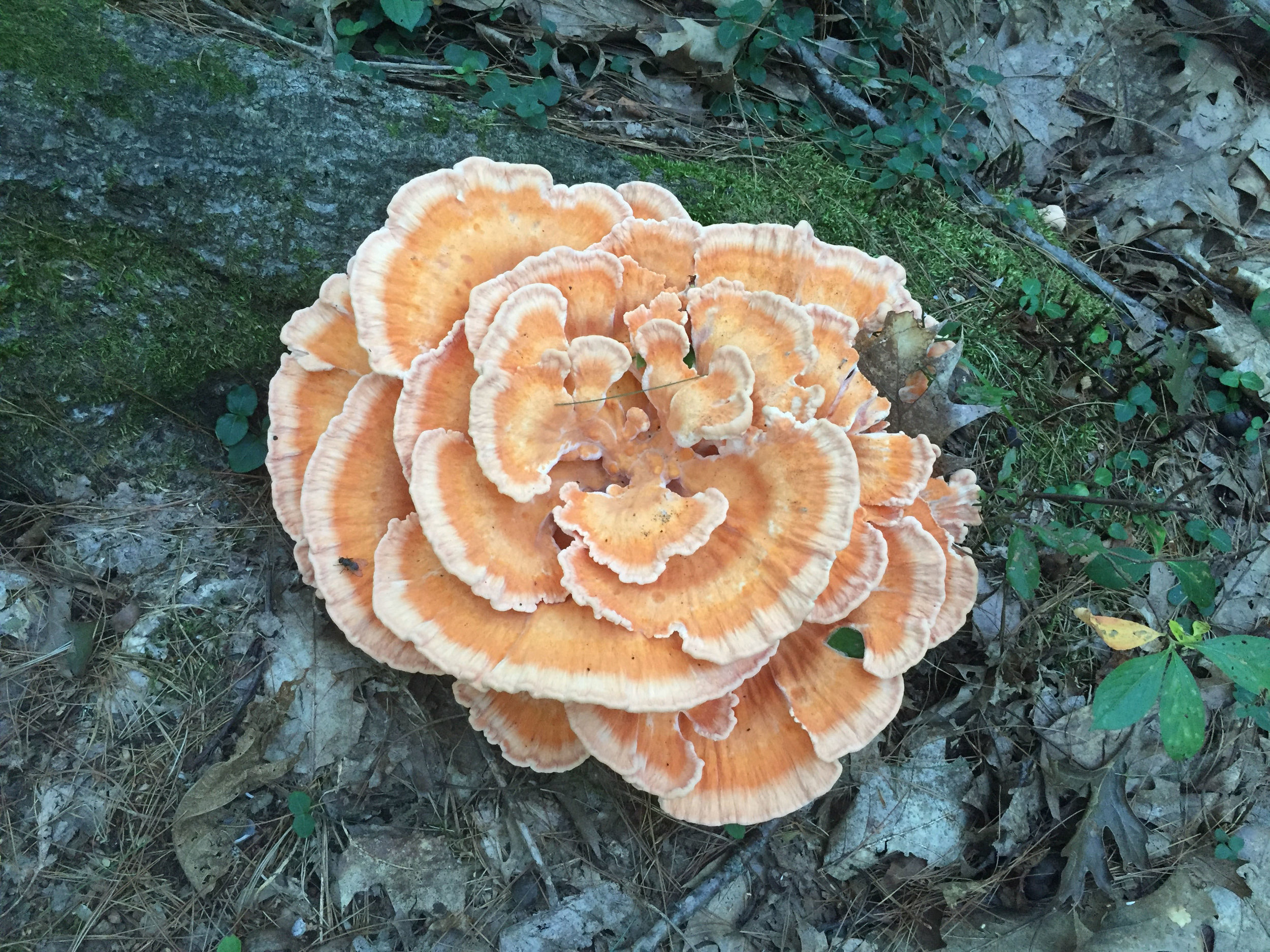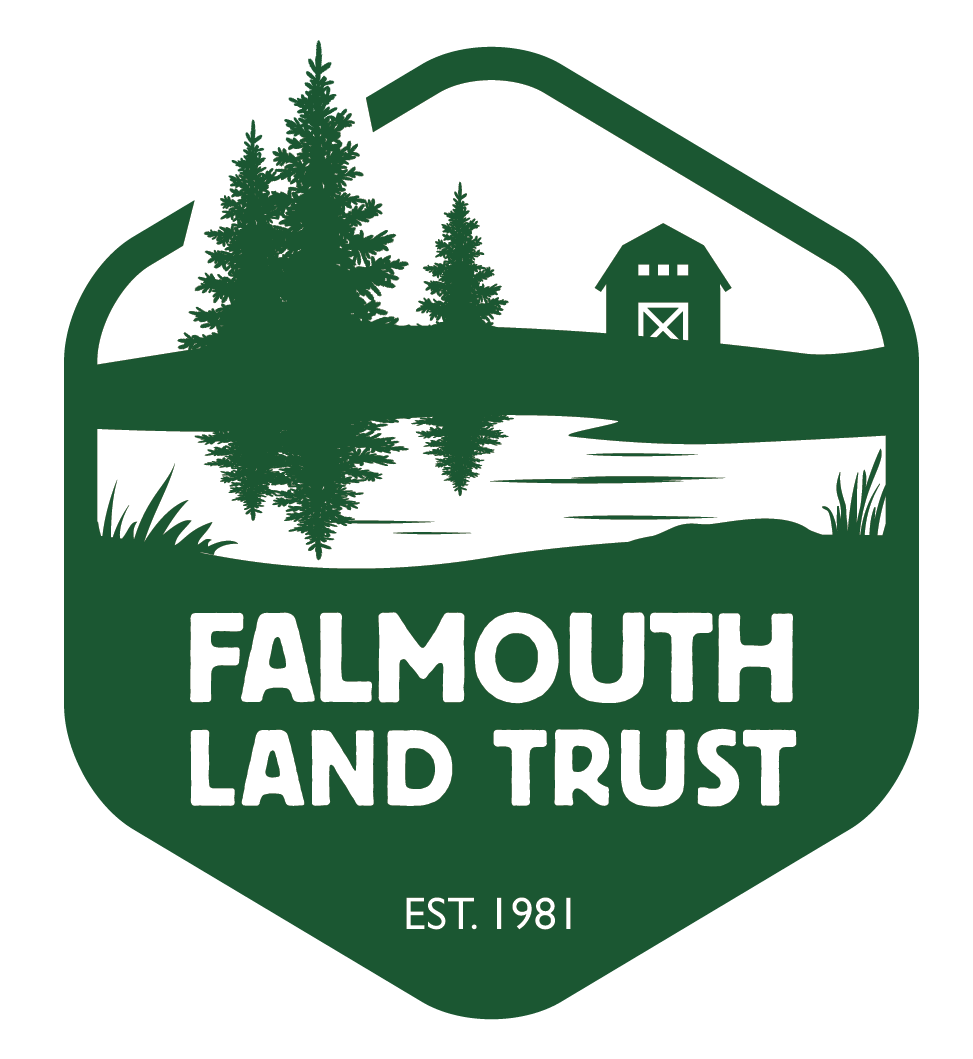
overview
Our work as a land trust is about people, nature, and connections to the land. The Falmouth Land Trust recognizes that the area of present-day Falmouth is the traditional unceded land — the home — of several indigenous peoples — the Aucocisco, Abenaki, and other Wabanaki. For more information on this rich history, please see below.
The Falmouth Land Trust (FLT) was started in 1981 by a small group of community members committed to protecting open space in Falmouth to help preserve the rural character of the community. Since then, trustees and community members have helped conserve over 2,700 acres of land in Falmouth, much of which is available for public access via an extensive trail network. In early 2010, a small group of trustees and community members committed themselves to developing the Cross Falmouth Trail that runs from Portland to Windham, touching many of the parcels protected by the Trust’s work.
In 2015, FLT added a 62-acre working farm to its portfolio of protected properties. FLT has partnered with Cultivating Community to restore this farm to agriculture and support local food production. This long-term partnership is increasing food security for New Americans and expanding the agricultural economy in our region.
In 2023, FLT was officially accredited by The Land Trust Accreditation Commission, the national accrediting body for land trusts. FLT went through a vigorous process to prove that we have sound finances, practice ethical conduct and responsible governance, and can ensure lasting stewardship. We are proud to be part of a community of over 450 accredited land trust across the country!
PEOPLES OF THE DAWNLAND
When the Laurentide Glacier retreated 13,000 years ago, meltwater formed the Presumpscot River, and mosses and lichens grew on the land. Caribou moved north to graze on them, and the ancestors of the Wabanaki followed them.
When the English explorer Christopher Levett visited the area in 1623, he traded with two Abenaki leaders, Skitterygusset and his sister Warrabitta. The people were living sustainably, planting corn, beans, and squash at two planting grounds along the Presumpscot River, as well as catching fish, harvesting shellfish along the shore of the ocean and Casco Bay islands, and hunting in the forest.
By the early 1700s, English colonists were moving into southern Maine in large numbers. Early treaties/understandings that protected the east bank of the Presumpscot from colonial incursions were increasingly violated. Two colonists built the first dam on the Presumpscot in 1735 to power a saw mill, and they ignored pleas from the Abenaki Chief Polin to maintain fish passage. The colonists’ pressure to extract natural resources overcame the sustainable practices of the Abenaki. When Chief Polin was ambushed and killed in 1756, his death precipitated the final exodus of indigenous people from the Falmouth area, and ushered in permanent colonial settlement east of the Presumpscot River.
The Smelt Hill Dam was finally removed in 2002.
Falmouth Land Trust History
Timeline
Key Dates and Events
2025
Ridgewood Preserve expands by ~60 acres. River’s Edge Preserve, a 24 acre property at the end of Eagle’s Lane, opens to the public.
2023
FLT is awarded accreditation from The Land Trust Accreditation Commission. FLT joins First Light.
2022
FLT hires its first full time Stewardship Manager and Education and Outreach Coordinator
2021
FLT celebrates its 40th anniversary conserving land in Falmouth.
2020
Underwood Springs Forest is acquired through the largest capital campaign in almost twenty years against a backdrop of the COVID19 pandemic. This is the largest acquisition on the Foreside in many years and will become a key link in building a green corridor on the eastern side of Falmouth.
2018
Morrill-Stillings Bird Sanctuary, a 27-acre property in West Falmouth, is acquired.
2015
Hurricane Valley Farm is acquired through a significant capital campaign including private donations and funding through the Town's Open Space Fund.
2009
Expanded partnership with the Town sees the Trust receive easements on 8 properties totaling 132 acres (Harriman, Hadlock, and Community Park). The DeSieyes family grants an easement on over 20 acres off of Woodville Road ensuring continued access to a key local recreational trail system.
2008
The Trust secured a 17.8 acre conservation easement at Ledges subdivision off of Ledgewood Road as part of a Conservation Subdivision. The new land abuts Portland Trails’ Ocean Ave Park.
2007
FLT secured a conservation easement for 20.7 acres on the Adams property, which abuts town-owned River Point Conservation Area. A conservation easement for 65 acres at Ridgewood Estates, a key parcel in the center of Falmouth with significant vernal pool habitat, was also secured. Falmouth voters overwhelmingly approve a $5M open space acquisition bond to be spent over 10 years.
2006
The Trust acquired an easement on 48 acres off of Blackstrap Road through a Conservation Subdivision development at Stoneridge Farm. The Trust and Pleasant Hill Neighborhood Association also acquire 15 acres in fee off of Pleasant Hill Rd. FLT joins with Oceanside Conservation Trust and the Cumberland Chebeague Land Trust to found Portland North Land Trust Collaborative (now the Southern Maine Conservation Collaborative).
2003
The Trust acquired additional land adjacent to the Blackstrap Hill Preserve from the Carr family, as well as an easement from the heirs of Marjorie McAdam for land that includes frontage along the Presumpscot River.
2002
The Trust achieved its goal of raising $1 million to purchase land off Blackstrap Rd. This campaign included significant contributions from the Land for Maine’s Future Fund ($200,000) and the Town of Falmouth (approximately $400,000). Additional land adjacent to the Blackstrap Hill Preserve was donated by the Donald family as a conservation easement, and by the Shafto family.
2001
The Trust began its campaign to purchase more than 250 acres of land off Blackstrap Road for $1 million.
2000
The Trust acquired additional land from the McCrann family adjacent to the original parcel donated in 1981.
1999
The Trust acquired additional property along the Presumpscot River through a conservation easement donated by the Mahoney family. Additional property was acquired from the developers of the Twin Pond Subdivision, and through the purchase of the Otte parcel on Falmouth Foreside.
1998
The Trust acquired property from the Smith Family on Falmouth Road and an easement from the developers of Presumpscot River Place for land along the Presumpscot River.
1997
Falmouth voters approved a land acquisition bond of $1 million dollars. The Trust acquired land in connection with the Sunny Field Development off of Falmouth Road.
1996
FLT acquired the Mill Creek parcel abutting the Falmouth Nature Preserve when it was transferred from the Nature Conservancy to the Trust.
1995
The Falmouth Land Trust assisted the Town with the purchase of land at Wilshore Farms in West Falmouth.
1992
The Trust acquired two additional conservation easements, one along Shoreline Drive, and one in connection with the Mitchell Wood subdivision. The Trust increased landholdings to 79 acres in fee and 92 acres in conservation easement.
1988
Trust accepted a conservation easement over the land at the Maine Audubon’s Gilsland Farm.
1987
Stormy Brook subdivision donates the Trust’s second conservation easement.
1981
Community member conservation interest and McCrann land donation lay the foundation for the Falmouth Land Trust.

